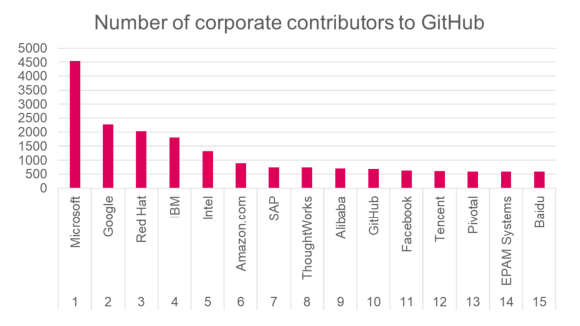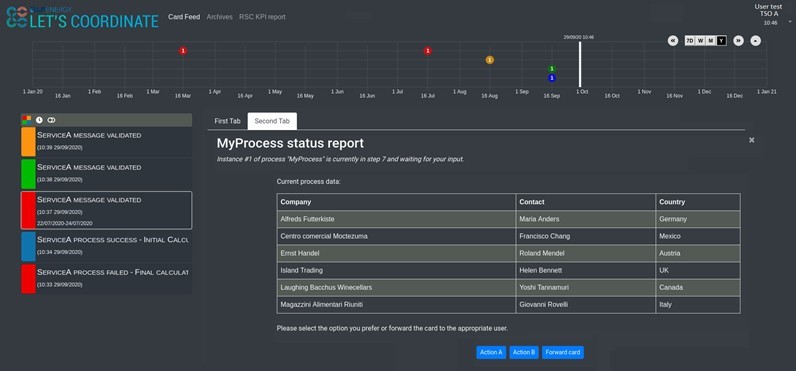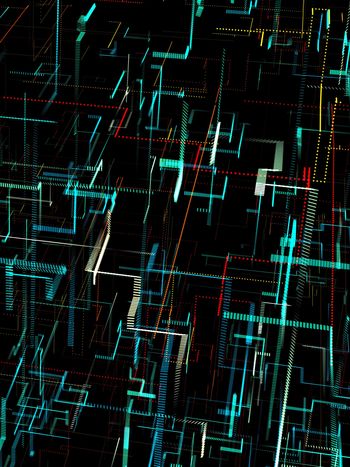An open source driven transformation in the power industry
In a global context of growing stakes in the mitigation of climate change, power grid operators must face huge transformation challenges. The massive development of distributed renewable energy sources, the shift to electric mobility and the development of demand-side response are essential levers for the decarbonization of our economies. These transformations will sometimes have to happen in conjunction with the aging of the existing infrastructures adding asset management challenges on top of the pile.
By Lucian Balea (R&D Program Director and open source manager, RTE), Benoît Jeanson (Open Source Enterprise Architect, RTE), Arjan Stam (Director of System Operations, Alliander)
Software will play a key role as an enabler of such transformations [1]. It will provide solutions to monitor, control, optimize, understand, coordinate, and transact in a power system of systems of growing complexity and continuous evolution. A multitude of building blocks will have to be developed or adapted and integrated to fulfill the needs: virtualization technologies, micro-service-based architectures, data exchange middleware, data bases and ontologies, analytics and artificial intelligence, IoT orchestration platforms, high performance numerical computation, cryptographic techniques, blockchain, etc.
Many technologies are mature or developing fast, often driven by other industries. However, looking at the needs and roadmaps in front of our companies, as well as available resources and time pressure, there is a necessity to increase tenfold the speed, cost-efficiency and innovation of the core-business software development projects. Inspired by other industries, we see open source as the disruptive software development model that is needed by the power industry to overcome the abovementioned challenges, while preserving operational performance.
The necessity to shift to open source
In the software world, open source has become a dominant strategy. Open source is a software development model based on a license that allows:
- free access to the source code and usage;
- modifications and derived works;
- royalty-free redistribution.
Eventually, this license turned out to enable an outstandingly efficient governance framework for collaborative software development across business organizations. The major high-tech companies are leveraging open source to achieve operational efficiency and growth.

Main actors collaborating on one of the most popular open source platforms
(source: Fil Maj, 2017 data from GitHub)
We investigated how other industries are leveraging open source collaborations and discovered that the main benefits of this software development model are:
- an acceleration by reusing what exists and sharing efforts, allowing to build faster and cheaper software,
- improved modularity, interoperability, evolutivity and shorter release time cycles,
- cutting-edge technological and business model innovation,
- access, through collaboration, to wider and more diverse skills and to a diversity of viewpoints,
- reduced vendor lock-in or customer-specific approaches that impede velocity and cost-efficiency.
LF Energy
Driven by the need to boost its core-business software projects, RTE started a collaboration in 2018 with The Linux Foundation which resulted in the launch LF Energy early 2019. LF Energy[2] is an open source foundation dedicated to the development of the common-plumbing software needed by the power industry in the context of the energy transition. Alliander joined LF Energy as Strategic Member soon after the formation. Alliander wants to realize it’s “Virtual Grid Vision”, a substantially decarbonized energy system combining renewables, demand response, more autonomous grid operation, and other energy carriers like hydrogen and heat. This ambition drives the need for standardization, sharing knowledge, and large-scale digitization. LF Energy is one of the strategic pillars for reaching these goals.
In two years, LF Energy has grown both in terms of ecosystem and project portfolio. Several European power grid operators as well as T&D technology and IT service companies have joined the initiative.
Indeed, open source foundations such as LF Energy proved to be key for the development of open source collaborations:
- They provide a proven governance framework and education on best practices that are conductive to the development of communities and to the growth of projects.
- They provide the visibility and credibility needed to convince the industry that a new approach to the digitalization of power grids based on open source is inevitable and emerging now.
- They enforce governance principles that ensure compliance with antitrust laws and public procurement rules, allowing end users to be prescriptive with respect to the use of open source technologies [3].
- They enable the pooling of various skills which help thinking and designing solutions going beyond the current silos (e.g. interoperable solutions at the interface of transmission and distributions grids).
- They provide a platform to discuss, discover and develop the solutions agnostically of the role each party plays in the energy ecosystem.
The potential of the open source model is further illustrated through the example of two major initiatives that have grown under the umbrella of LF Energy. The first project, OperatorFabric, aims at developing a smart HMI concept for operational activities. The second project, SEAPATH, targets an industrial grade and reference implementation platform for the virtualization of power industry automation and protection applications. These two examples are core-business software applications with high operational potential for power grid operators in the future energy landscape.
OperatorFabric
Transitioning its organization for real time operations by implementing new kinds of 24/7 rooms for operation, asset management, and IT supervision, RTE believes that the current design of control rooms will not scale. Information is scattered in various application HMIs and its criticality is hard to perceive.
In the views of Alliander, the need for a physical control room will be less explicit as the role of the grid operator slowly shifts from physical (maintaining assets) to functional (providing services). There is a true belief in a virtual control room with shared organizational roles that can contribute to operating a virtual grid.
The ambition of OperatorFabric project [4] is to address the needs of operators in a more distributed, complex, cooperative and fast changing context. Operators will have to interact with a wider range of processes, applications, teams (e.g. flexibility services from distributed entities, asset health monitoring and predictive maintenance, grid automation orchestration). OperatorFabric provides a unified screen to perform both human interactions (e.g. coordination with another team) and machine interactions (automation, prediction, AI assistance, etc.).

OperatorFabric UI concept: timeline of events on the top, card feed sorted according to criticality on the left, and contextual information and actuation of a specific card on the center-right
SEAPATH
The SEAPATH [5] project was inspired by the shift to virtualization that happened in the telecommunication network industry, where open source projects such as ONAP allowed carriers to transition to software-centric telecommunication networks enabling them to increase tenfold the scalability of the network to meet new demands, such as 5G, while improving operational performance [6].
An analogy could be made with the power grid industry whose control architecture needs to be swiftly adapted to take account of infeed at lower grid levels, higher dynamics in flow patterns and more distributed controls (both internal controls and grid flexibility services from third parties). Moving to software-centric grid automation systems would provide the required flexibility and scalability as well as substantial O&M cost savings. Following the way paved by the telecommunication industry (and reusing some open sourced technologies), a team involving several grid operators, T&D vendors and IT service companies was formed in 2020 under LF Energy umbrella in order to draft a roadmap which eventually resulted in the launch of the SEAPATH project. The mission of this project is to develop a “reference design” and “industrial grade” open source real-time platform that can run virtualized automation and protection applications.
The SEAPATH project helps Alliander transition to a standardization of substations, making substations more situationally aware of their grid functions and creating flexible access to multi-vendor substation capabilities. For RTE, SEAPATH will be the foundation of the next generation of substation automation and protection systems. It will rationalize the IT infrastructure at the grid edge, ease the implementation and scaling of automation systems, and reduce O&M costs as well as entry cost to innovation.
Conclusion
The open source collaborative software development model, under the umbrella of LF Energy, provides key benefits for the success of ambitious projects that are essential to the energy transition. First, an acceleration is achieved by sharing development efforts and reusing state-of-the-art building blocks, thus allowing to build faster and cheaper software. Second, the model fosters a wider cross-industry collaboration, involving technology vendors and end-users. This will ensure vendor-agnostic implementations and convergence of utility practices. Third, the model is conductive to innovative, flexible, scalable and secure IT/OT solutions.
Thumbnail credit: Photo by USGS on Unsplash
- [1] [a] ec.europa.eu/commission/presscorner/detail/en/ip_21_1828 [b] www.whitehouse.gov/briefing-room/statements-releases/2021/04/23/fact-sheet-president-bidens-leaders-summit-on-climate/
- [2] www.lfenergy.org
- [3] Cf. “Requiring a specific Open Source Software in public contracts – best practices to adopt” www.lfenergy.org/wp-content/uploads/sites/67/2019/10/Note_OpenSource_CompetitionLaw_EN-1.1.pdf
- [4] opfab.github.io
- [5] (S)oftware (E)nabled (A)utomation (P)latform and (A)rtifacts (TH)erein, www.lfenergy.org/projects/seapath/
- [6] www.lfenergy.org/wp-content/uploads/sites/67/2018/10/1-Morning-Session-Jim-Zemlin-FINAL-v2.pptx, page 14

